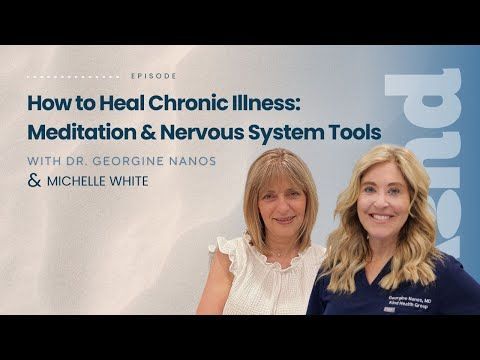How "Good Cholesterol" Almost Killed Me - A Doctor's Wakeup Call for Women's Heart Risk
July 21, 2025
The Wake-Up Call That Changed Everything

I'm a board-certified family physician, and honestly, I'm only alive today because I finally stopped believing what I'd been taught about "good cholesterol."
For most of my adult life, my labs looked great. Sure, my LDL was a little high, but my HDL - the good cholesterol? Fantastic. Every single physician who glanced at my lipid panel would nod approvingly and tell me I was heart-healthy. And I bought into it completely.
That belief almost killed me.
Here's what I wish I'd known sooner: the cholesterol ratio we've been using to reassure women is not just outdated—it's dangerous. And there's this silent epidemic of heart disease in women that we're missing every single day, even with the best intentions.
Let me tell you how I, as a doctor who should have known better, nearly became another statistic. And how one test I'd never heard of saved my life.
The False Comfort of Looking "Good on Paper"
For years, my lipid panel looked like this:
LDL-C: 137 mg/dL – okay, borderline high, but nothing scary
HDL-C: 74 mg/dL – everyone always said this was "very protective"
Triglycerides: 99 mg/dL – completely normal
Total Cholesterol: 231 mg/dL
Total Cholesterol/HDL ratio: 3.12 — which put me in the "low risk" category
Every doctor I saw would look at these numbers and say the same thing: "You're in great shape." And honestly, why wouldn't I believe them?
But here's where it gets scary for women specifically:
We're way less likely to get referred for advanced heart testing
When we do have symptoms, they're often brushed off
Most of us have no idea that heart disease is actually our #1 killer
The Wake-Up Call That Changed Everything
Looking back now, the warning signs were there, but they were invisible – which I guess is the whole problem.
2015-2020: Living in Blissful Ignorance
I was active, felt great, got my annual labs like clockwork. Everything looked "textbook perfect." No red flags anywhere. And honestly, I didn't give it a second thought—why would I?
Late 2020: The Test That Changed My Life
Here's where curiosity—and maybe some gut instinct—saved my life. I decided to order a blood test that most doctors never even think to run: lipoprotein(a), or Lp(a) for short.
When the result came back, I literally felt sick to my stomach. 206.7 nmol/L.
To put that in perspective, anything over 75 is considered high risk. I was almost three times that level. And here's the kicker—not one doctor had ever mentioned this test to me. Ever.
What the Hell is Lp(a) and Why Hadn't I Heard of It?
Okay, so lipoprotein(a) is basically cholesterol with an attitude problem. It's genetically inherited, super inflammatory, and when it's high, it's really dangerous.
What makes it different from regular LDL is this sticky protein tail called lipoprotein(a). Think of it like LDL cholesterol, but with superglue attached. It loves to stick to your artery walls, helps form clots, and speeds up plaque buildup like nobody's business.
And here's what really gets me: Diet and exercise do absolutely nothing to it.
You can be a marathon runner, eat nothing but kale and quinoa, never touch a cigarette—and still have sky-high Lp(a). It's completely genetic. You either inherit it or you don't.
But despite how dangerous this is, most routine cholesterol panels don't even include it. And most doctors don't think to order it because, honestly, we weren't taught about it. It's only been available in regular labs for the past few years.
Why This Matters So Much (Especially for Women)
High Lp(a) is now recognized as a major risk factor for:
Heart attacks
Strokes
Coronary artery disease
Aortic stenosis
Recent research shows that people with Lp(a) levels like mine can have double or even triple the risk of heart problems, even when everything else looks perfectly normal.
That was me exactly. Perfect HDL, great ratios, normal triglycerides. And yet I was walking around with a ticking time bomb in my arteries that I couldn't feel and had no idea about.
And I'm definitely not alone here. One in five people have elevated Lp(a). That's 20% of the population—millions of people who have no clue.
Women get hit especially hard because:
We don't get tested as often
Doctors keep telling us our ratios look "fantastic"
Menopause makes everything exponentially worse
If you take nothing else from my story, please take this: Ask for your Lp(a) to be tested. Even if your doctor hasn't brought it up. Even if all your other numbers look great. Even if you feel completely fine.
Because this one test literally saved my life.
2023: Menopause and the Scan That Told the Real Story
When I hit menopause in 2023, I expected the usual suspects—hot flashes, mood swings, terrible sleep. What I wasn't ready for was how dramatically cardiovascular risk changes basically overnight.
Here's what happens: when estrogen drops, you lose its protective effect on your arteries almost immediately. Estrogen helps keep blood vessels flexible, cholesterol levels stable, and inflammation under control. Without it, plaque formation can accelerate really fast.
Even though I felt completely fine, something in my gut told me not to mess around. I wanted to see what was actually happening inside my arteries, not just rely on basic labs and blood pressure checks.
So I ordered a test most people have never heard of: a Coronary CT Angiogram (CCTA).
What is a CCTA and Why Don't We All Get One?
A CCTA uses a CT scanner with contrast dye to create incredibly detailed 3D images of your coronary arteries—the ones that feed your heart.
Unlike stress tests or EKGs that only catch problems after blood flow is already compromised, a CCTA shows you what's building up in your arteries years before you'd ever feel anything wrong.
It shows:
Soft plaque (the really dangerous stuff that can rupture)
Calcified plaque (more stable but still important)
How much total plaque you have
Early narrowing that wouldn't cause symptoms yet
It's basically a crystal ball for your heart health.
The Results That Nearly Stopped My Heart
When my CCTA results came back, I was completely stunned.
50% blockage in my left anterior descending (LAD) artery. The widowmaker.
This is the artery that, when it suddenly closes, causes the kind of heart attack that kills people without warning. And I had absolutely no symptoms. No chest pain, no shortness of breath, nothing.
If I hadn't gotten that scan, I would have kept thinking I was perfectly healthy—right up until the day my heart gave out.
The Problem That's Bigger Than My Story
Here's what really scares me: most people will never be offered a CCTA unless they already have symptoms or known heart disease. Insurance often won't cover it "just because." And doctors usually don't think to order it for "healthy" patients—especially women with good cholesterol numbers.
But the data is crystal clear:
Plaque ruptures most often happen at 50-70% blockage (exactly where mine was)
Women are more likely than men to die from their first heart attack
Most cardiac deaths happen with zero warning signs
How This Test Saved My Life
Because of that scan, I didn't have to wait for a heart attack to start protecting myself.
Within days, I was on Repatha (a PCSK9 inhibitor), aspirin, high-dose omega-3s, and had completely changed my approach from casual prevention to serious intervention.
Two years later, my follow-up scan showed no soft plaque and no progression. My arteries were stable. My future looked completely different.
What would have happened without treatment?
50% LAD blockage = 15-25% chance of heart attack or death within 5 years
Lp(a) over 200 = 2-3 times higher risk of heart attack or stroke
Menopause = 25-40% increase in plaque formation
Without intervention, I probably would have had a fatal or life-changing cardiac event. I was literally a walking time bomb and would never have known until it was too late.
Why Waiting for Symptoms is a Death Sentence
We've been conditioned to think heart attacks look like this: a man clutching his chest, crushing pain down the left arm, dramatic collapse. That image is so ingrained that we think it's the only way heart disease shows up.
But that's not how it works for women.
Our heart problems often look like:
Fatigue that won't go away no matter how much you rest
Getting winded going up stairs when you never used to
Nausea, indigestion, or feeling lightheaded
Sleep problems or weird dreams
Anxiety that seems to come from nowhere
Neck, jaw, or back pain that comes and goes
These aren't minor symptoms. These are heart symptoms—our version of chest pain.
But too often, we're told: "You're probably just stressed." "It's normal aging." "You're going through menopause." "You're a busy mom—of course you're tired."
Even when we know something feels off, we're taught to doubt ourselves. And doctors, even with the best intentions, sometimes reinforce that doubt.
The result? More than half of women who die suddenly from heart disease never had a single symptom beforehand. Not one.
We Can't Wait for Our Bodies to Warn Us
This is why waiting for symptoms is so dangerous—especially for women over 40, going through menopause, or with family history.
You can't feel plaque building up. You can't feel your Lp(a) rising. You can't know what's happening in your arteries until something ruptures—or until you look.
That's why advanced testing matters. That's why we need to stop treating heart disease in women like some rare occurrence.
Because too often, the first symptom is death.
What Every Woman Needs to Know Right Now
If you're over 40, approaching menopause, or have family history:
Get an Lp(a) test (even if your doctor hasn't mentioned it)
Ask about a Coronary CTA (even if you feel perfectly fine)
Don't rely on standard cholesterol panels alone
Don't ignore subtle symptoms
Don't let anyone dismiss your concerns
Early detection didn't just save my life—it gave me back my future.
The Bottom Line
Women deserve better. We deserve real screening, real prevention, and real answers. We deserve to live long, healthy lives without becoming another statistic.
For too long, we've been told heart disease is a "man's problem." It's not. It's our #1 killer. It's often silent. It's frequently ignored. But it's also highly preventable—if we get the right information and act on it.
I'm here today because I pushed beyond "normal labs." I asked more questions. I demanded answers. And I started treatment before it was too late.
You can do the same. Share this with every woman you care about. It might just save their life.

Meet the Author
You might also enjoy:

In this enlightening conversation, Dr. Georgine Nanos and Dr. Melinda Silva delve into the critical topics of women's health, hormone balance, and the evolving understanding of aging. They discuss the recent FDA changes regarding hormone therapy, the systemic issues in women's healthcare, and the importance of informed choices. Dr. Silva shares her personal journey from traditional medicine to hormone therapy, emphasizing the need for comprehensive care and the significance of balancing hormones. The discussion also highlights the empowerment of women in midlife, the role of strength training, and the importance of self-recognition and support among women.

Sabrina Falquier started crying at a medical conference in Napa. Not because something went wrong, but because something finally felt right. After years of seeing 18 patients a day in 15-minute slots, checking all the boxes of a successful medical career while feeling like something was missing, she found herself at Healthy Kitchens, Healthy Lives—a collaboration between Harvard School of Public Health and the Culinary Institute of America. The keynote speaker started talking, and tears came. One shoulder whispered all the possibilities. The other shoulder reminded her of all the reasons she couldn't pursue them. By day two and a half, she realized something that changed everything: her current employer was just that—her current employer. Not her destiny. Now triple board-certified in internal medicine, culinary medicine, and lifestyle medicine, Sabrina has built a career teaching medical students, consulting with community organizations like Olivewood Gardens, and showing people that the most powerful medicine might already be sitting in their pantry. This conversation wanders through the deeply personal terrain of leaving the medical highway for the frontage road, the science behind why plants matter so much, and the quiet courage it takes to listen when something inside you says "there has to be more than this." Key Moments & Takeaways 00:00 - 07:03 | The Conference That Changed Everything Sabrina shares the moment she knew she had to leave traditional primary care. Spoiler: it involved crying at a medical conference and realizing her employer wasn't her destiny. 07:03 - 15:22 | What Actually Is Culinary Medicine The definition that matters: using food and nutrition to prevent and treat disease through hands-on learning. Medical students cooking in kitchens. Communities learning that canned tomatoes still count. Evidence-based nutrition that doesn't require a Whole Foods budget. 1 5:22 - 24:36 | The Plant Kingdom Revolution Why plants matter beyond fiber and nutrients. Phytochemicals, polyphenols, and the compounds that actually make your cells work better. The science behind eating the rainbow (and no, Skittles don't count). 24:36 - 32:15 | Teaching the Next Generation Medical students learning to cook. Teenagers at Olivewood Gardens discovering that healthy food can taste incredible. The ripple effect of planting seeds with future doctors who will actually talk about food with their patients. 32:15 - 40:48 | Making It Work in Real Life The pantry strategy when you haven't been to the grocery store. Why frozen and canned vegetables are completely legitimate. How to think about food when your schedule is chaotic and your budget is real. 40:48 - 49:07 | Rancho La Puerta & What's Next Sabrina's work at the iconic wellness resort in Tecate, Mexico. Teaching in their kitchen. Her husband rediscovering his humanity there during the pandemic. The place where boot camp and hammocks coexist. 49:07 - 54:25 | Following the Pull The scary, beautiful reality of going off the linear path. No regrets. Financial instability sometimes. The practice of saying yes to mission-aligned opportunities and no to everything else. An invitation to listen to what's calling you next. Resources Mentioned Sensación Salud Website: https://www.sensationssalud.com/ Instagram: @sensationssalud Dr. Sabrina Falquier's Podcasts Culinary Medicine Recipe Olivewood Gardens and Learning CenterRancho La Puerta (Tecate, Mexico) - April 2025 dates available The Kitchenistas of National City documentary Culinary Medicine Resources American College of Lifestyle






